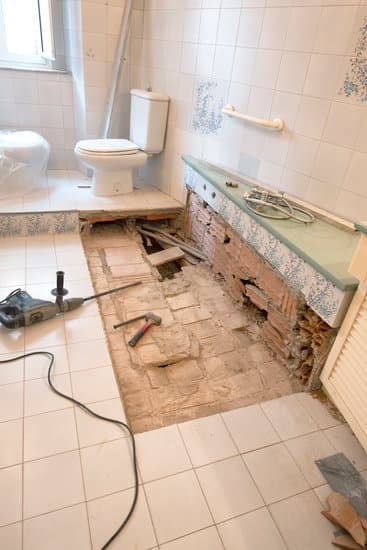How do nonprofits perform home improvement work to benefit families and communities? Nonprofits play a crucial role in addressing the housing needs of individuals and families, especially those who are unable to afford necessary repairs and renovations. In this article, we will explore the importance of nonprofits in home improvement, their role in community development, how they secure funding for projects, and the impact of their work on families and communities.
Nonprofits are essential in addressing the housing needs of low-income individuals and families, seniors, and people with disabilities. They provide critical support by rehabilitating homes, making them safe and accessible for those in need. Through their efforts, nonprofits not only improve living conditions but also contribute to community development by revitalizing neighborhoods and promoting stability.
In order to carry out their home improvement projects, nonprofits rely on various sources of funding. We will delve into how these organizations secure financial support through grants, donations, fundraising events, and partnerships with local government agencies and businesses. Additionally, we will discuss the challenges that nonprofits face in performing home improvement work and ways for individuals to support their efforts.
The Role of Nonprofits in Community Development
Nonprofits play a crucial role in community development, particularly when it comes to home improvement projects. These organizations are dedicated to improving the quality of life for individuals and families by providing much-needed assistance with housing repairs and renovations. Nonprofits often step in to fill the gap for those who cannot afford necessary home improvements, making a significant impact on the overall well-being of communities.
One of the primary ways nonprofits contribute to community development is by offering home repair and renovation services to low-income households. These organizations prioritize safety and accessibility, ensuring that individuals and families have adequate living conditions. By addressing issues such as leaky roofs, faulty plumbing, or deteriorating infrastructure, nonprofits help create healthier and more sustainable living environments.
Nonprofits also focus on creating partnerships with local government agencies and businesses to secure resources for their home improvement projects. By working collaboratively with these entities, nonprofits can access funding, materials, and skilled labor to support their initiatives. This collaborative approach not only strengthens the nonprofit’s capacity to serve more individuals but also fosters a sense of community involvement and support for the organization’s mission.
In essence, nonprofits are instrumental in promoting community development through their dedication to improving housing conditions for those in need. Their commitment to collaboration, resource mobilization, and service delivery has a lasting impact on families and neighborhoods, ultimately contributing to a better quality of life for all involved.
How Nonprofits Secure Funding for Home Improvement Projects
Grant Writing and Fundraising
One of the primary ways that nonprofits secure funding for home improvement projects is through grant writing and fundraising efforts. Nonprofits often apply for grants from government agencies, private foundations, and other organizations that provide financial support for community development initiatives.
In addition to grant writing, nonprofits also engage in various fundraising activities such as hosting events, online crowdfunding campaigns, and appeals to individual donors. These efforts are essential for obtaining the necessary funds to carry out home improvement work in under-resourced communities.
Corporate and Individual Donor Partnerships
Nonprofits also seek financial support for home improvement projects through partnerships with local businesses and individual donors. Corporate sponsorships can provide significant funding, as well as in-kind contributions such as building materials and skilled labor. Additionally, individual donors who are passionate about community development and homeownership may contribute financially to specific home improvement initiatives. These partnerships not only help secure funding but also foster a sense of community involvement and support for the nonprofit’s mission.
Government Grants and Subsidies
Another avenue for securing funding for home improvement projects is through government grants and subsidies. Local, state, and federal governments often offer financial assistance programs specifically designed to support affordable housing initiatives and community revitalization efforts.
Nonprofits can take advantage of these opportunities by applying for grants or subsidies that can be used to cover the costs of home repairs, renovations, or energy-efficient upgrades. By tapping into these resources, nonprofits can stretch their funding further and maximize the impact of their home improvement work on families and communities.
Partnering With Local Government and Businesses for Resources
Nonprofits play a crucial role in providing home improvement work for families and communities in need. One of the key ways they are able to carry out these projects is by partnering with local government and businesses to secure the necessary resources. These partnerships allow nonprofits to access funding, materials, and volunteer support that are essential for successful home improvement initiatives.
Partnering with local government agencies can provide nonprofits with access to grants, subsidies, and other forms of financial assistance that can significantly offset the costs of home improvement projects. Additionally, collaborating with local government entities can also help nonprofits navigate regulatory requirements and obtain necessary permits for their construction or renovation work.
In addition to government partnerships, nonprofits often seek support from local businesses in the form of donations, discounted materials, or volunteer labor. Through these relationships, nonprofits can acquire building supplies, tools, and expertise at a lower cost or even free of charge. Furthermore, businesses may also offer their employees as volunteers to assist with the actual construction or renovation work.
Ultimately, by establishing strong partnerships with local government agencies and businesses, nonprofits are able to maximize their impact in the community and leverage a wider network of resources. These collaborations not only benefit the nonprofit organizations themselves but also contribute to the overall development and well-being of families and neighborhoods in need.
- List item 1
- List item 2
- List item 3
The Impact of Home Improvement Work on Families and Communities
Nonprofits play a crucial role in performing home improvement work, with a significant impact on families and communities. Through their efforts, nonprofits are able to address the critical housing needs of low-income families, the elderly, and disabled individuals. These organizations provide vital services that can improve living conditions, enhance safety and security, and ultimately contribute to the overall well-being of individuals and neighborhoods.
The impact of home improvement work extends beyond the physical renovation of homes. By providing much-needed repairs and upgrades, nonprofits are able to create a sense of stability and pride for families who may otherwise struggle to maintain their living spaces. This not only improves their quality of life but also fosters a sense of community pride and belonging.
Additionally, nonprofit home improvement projects often have a ripple effect within communities. By revitalizing neighborhoods, these initiatives can lead to increased property values, improved aesthetics, and a greater sense of overall community investment. As a result, the positive impact of nonprofit home improvement work extends far beyond the individual homes being renovated.
Overall Impact:
- Improved living conditions for vulnerable individuals
- Enhanced safety and security in homes
- Increased community pride and cohesion
Furthermore, by providing training opportunities or involving local residents in the renovation process, nonprofits can also generate job opportunities within communities. This not only contributes to economic development but also empowers individuals to develop valuable skills that can benefit them in the long term.
Examples of Successful Nonprofit Home Improvement Projects
Nonprofit organizations play a crucial role in home improvement projects, providing much-needed support to low-income families and underserved communities. These organizations take on various initiatives to address housing issues, ranging from minor repairs to major renovations, ultimately making a significant impact on the lives of individuals and the overall development of communities.
One way nonprofits perform home improvement work is by forming partnerships with local government agencies and businesses. These collaborations provide access to essential resources such as building materials, skilled labor, and financial support. By leveraging these partnerships, nonprofits can maximize their impact and extend their reach to serve more families in need.
Another important aspect of successful nonprofit home improvement projects is the utilization of volunteer labor. Many nonprofits rely on the dedication of volunteers who contribute their time and skills to complete home improvement tasks. This not only reduces costs for the organization but also fosters a sense of community involvement and solidarity among residents.
Furthermore, effective project management is essential for the success of nonprofit home improvement initiatives. Nonprofits must carefully plan and execute their projects, ensuring that they adhere to building codes and safety regulations. By maintaining high standards of workmanship, these organizations can enhance the quality of life for homeowners while uplifting the entire neighborhood.
| Aspect | Details |
|---|---|
| Partnerships | Collaborations with local government agencies and businesses provide necessary resources. |
| Volunteer Labor | Utilization of volunteers’ time and skills reduces costs for nonprofits. |
| Project Management | Careful planning ensures compliance with building codes and safety regulations. |
Challenges and Obstacles Faced by Nonprofits in Performing Home Improvement Work
Nonprofits often face several challenges and obstacles when performing home improvement work. One of the most significant hurdles is securing funding for projects. Many nonprofits rely on donations and grants to finance their home improvement initiatives, and the competition for these resources can be fierce. Additionally, fundraising efforts may not always yield the necessary funds, making it difficult for nonprofits to take on larger-scale projects or assist a greater number of families in need.
Another challenge that nonprofits encounter is finding skilled labor and volunteers to perform the home improvement work. While many individuals are willing to donate their time and expertise, recruiting reliable and experienced workers can be a daunting task. Nonprofits often have to invest time and resources into training volunteers or hiring contractors, which adds to the overall cost of the project.
Moreover, navigating through local regulations and building codes can be a major obstacle for nonprofits carrying out home improvement work. Ensuring compliance with all legal requirements can be a complex process that requires both time and expertise. Additionally, obtaining permits and approvals for construction or renovation projects can add delays and expenses to the endeavor.
Despite these challenges, many nonprofit organizations continue to make a positive impact through their home improvement projects. By finding innovative ways to overcome obstacles and collaborating with various stakeholders including governments, businesses, and local communities, nonprofits are able to address these issues effectively.
| Challenges Faced by Nonprofits | Obstacles Encountered |
|---|---|
| Securing funding for home improvement projects | Fundraising competition, insufficient funds |
| Finding skilled labor and volunteers | Recruiting experienced workers/training volunteers |
| Navigating local regulations and building codes | Compliance complexity, obtaining permits/approvals |
Ways for Individuals to Support Nonprofits in Their Home Improvement Efforts
Volunteer Your Time and Skills
One of the most direct ways individuals can support nonprofits in their home improvement efforts is by volunteering their time and skills. Many nonprofits rely on volunteers to help with various tasks such as painting, carpentry, landscaping, and general labor. By offering your time and expertise, you can directly contribute to the success of a home improvement project in your community.
Donate Materials and Supplies
Another way to support nonprofits in their home improvement work is by donating materials and supplies. Nonprofits often struggle with limited budgets and may not have the resources to purchase all the necessary materials for a project. By donating items such as paint, lumber, tools, or even furniture, you can help offset some of the costs associated with home improvement projects.
Financial Contributions
Lastly, individuals can support nonprofit home improvement efforts through financial contributions. Donating money to a nonprofit allows them to allocate the funds where they are needed most, whether it’s for purchasing materials, hiring professional contractors, or covering administrative expenses. Even small donations can make a significant impact on the success of a nonprofit’s home improvement projects.
By volunteering your time and skills, donating materials and supplies, or making financial contributions, you can play a crucial role in supporting nonprofits as they perform home improvement work in communities. Your support helps these organizations continue their mission of creating safe and comfortable living environments for families in need.
Conclusion
In conclusion, the vital role of nonprofits in home improvement work cannot be overstated. Nonprofits play a crucial part in addressing the housing needs of families and communities, particularly those who may not have the financial means to make necessary improvements to their homes.
These organizations secure funding through various means such as grants, donations, and partnerships with local government and businesses. By leveraging these resources, nonprofits are able to execute successful home improvement projects that have a lasting impact on the lives of individuals and the overall well-being of communities.
Despite the significant contributions of nonprofits in home improvement work, these organizations also face a myriad of challenges and obstacles. Limited resources, logistical hurdles, and bureaucratic red tape can hinder their efforts to make a meaningful difference in the lives of those they seek to serve. However, by garnering support from individuals who are willing to volunteer their time or donate resources, nonprofits can continue to expand their reach and achieve even greater impact.
Looking ahead, it is crucial for individuals, businesses, and government entities to recognize the importance of supporting nonprofits in their home improvement endeavors. There is no doubt that these organizations will continue to play a critical role in addressing housing needs and fostering community development. By coming together to provide continued support, we can ensure that nonprofits have the means to carry out their essential work for years to come.
Frequently Asked Questions
What Is the Difference Between a Nonprofit and a 501c3?
The main difference between a nonprofit and a 501c3 is that not all nonprofits are 501c3 organizations. A 501c3 is a specific tax-exempt status given by the IRS to charitable organizations, while a nonprofit simply means an organization that does not distribute its profit to owners or shareholders.
Can Nonprofits Generate Income From Their Activities?
Yes, nonprofits can generate income from their activities. They can earn money through fundraising events, donations, membership fees, program services, merchandise sales, and other activities related to their mission. This income is typically used to support the organization’s operations and programs.
How Do People Working for a Non Profit Make Money?
People working for a non-profit can make money in the form of salaries or wages just like employees of for-profit companies. Nonprofit employees may also receive benefits such as healthcare coverage, retirement contributions, and paid time off.
The difference lies in the fact that excess revenue is reinvested into the organization’s mission, rather than distributed to shareholders or owners.

I’m thrilled to have you here as a part of the Remodeling Top community. This is where my journey as an architect and remodeling enthusiast intersects with your passion for transforming houses into dream homes.





